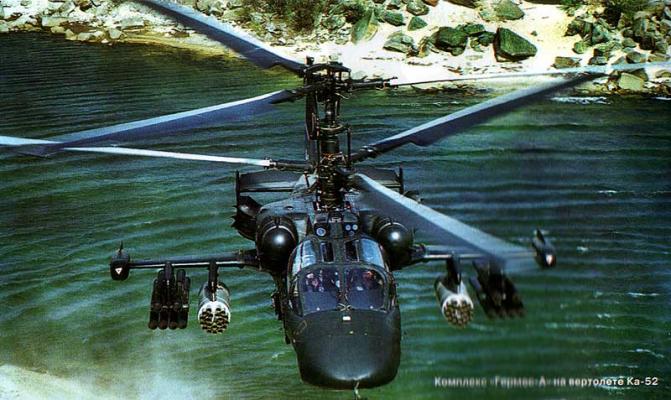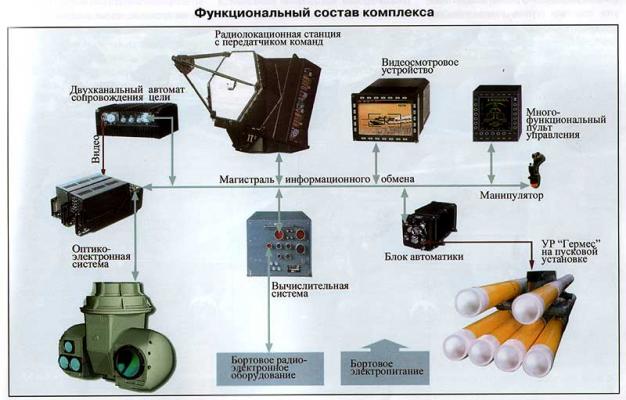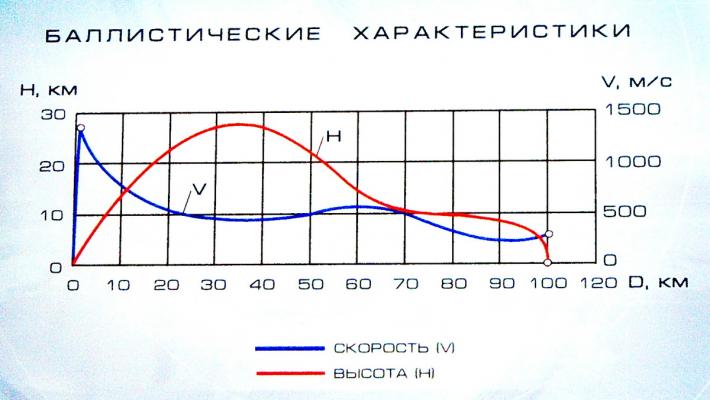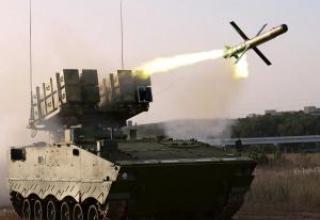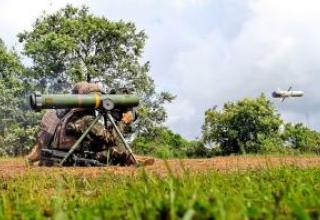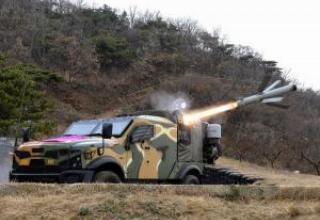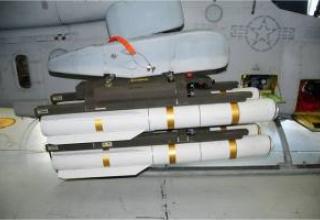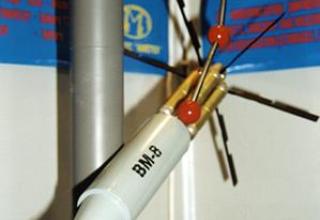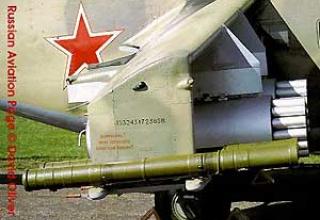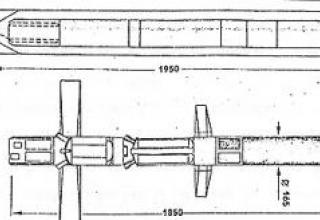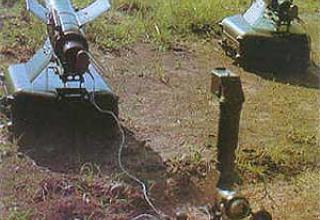The long-range Hermes PTRK is a promising complex of high-precision weapons of a new generation - reconnaissance and fire-propelled multi-purpose PTRK, combining the properties of artillery and anti-tank systems. The complex is designed to destroy modern and promising objects of armored vehicles, non-armoured vehicles, stationary engineering structures, surface targets, low-speed flying air targets, manpower in shelters.
The complex was developed at the Instrument-Making Design Bureau (Tula) under the leadership of A.G. Shipunov.
"Hermes" opens up new areas of combat application of anti-tank weapons - the transfer of its fire into the depth of the enemy's range and the ability to repel an attack at any point of the defense without changing the firing position. This will allow to prevent the promotion and deployment of armored units of the enemy on the line of attack with the reduction of own losses. The use of such tactics sets the task to radically extend the range of reconnaissance and defeat of armored units by promising MANPADs, which should be able to cover the entire area of responsibility of their reconnaissance and defeat of the enemy at the full depth of the near tactical zone (25-30 km). Moreover, since the modern armored grouping is a complex mobile system, to destroy such a grouping requires a comprehensive fire defeat of the entire nomenclature of targets that are part of it, as well as other targets of different classes that operate in the offensive zone.
PTRK "Hermes" is constructed on a modular principle that gives the chance to optimize structure of involved means depending on solved problems, reasonably to combine various ways of guidance on various ranges of firing, and also to place a complex on land, air and sea carriers.
The use of external reconnaissance and target designation means, including those placed on remotely manned aircraft (UAV), allows to realize the main provisions of the "contactless warfare" concept to the fullest extent, to reduce the terms of execution and to expand the range of tasks to be solved with the involvement of the minimum required number of forces and means, as well as to minimize the material costs of operations.
Tests of an aviation version of the Hermes-A complex as part of the Ka-52 attack helicopter weaponry were completed in the summer of 2003. The Hermes-A complex has been prepared for mass production.
Composition:
Land-based option
The composition of the complex:
- A set of guided missiles in transport and launch containers with three types of homing heads (laser semi-active, infrared, radar);
- a combat vehicle with a packet type launcher (24 TPKs each) with onboard reconnaissance and laser illumination of targets;
- a fire control vehicle with a mast climbing device for multi-channel, multispectral optronic and radar reconnaissance means, which is intended for reconnaissance, target detection and recognition, target distribution and target designation.
The Hermes rocket (see photo) with a detachable launch engine has a universal shrapnel-phase warhead. The controls are aerodynamic rudders. Type of launch - from TPK with an embossing charge. For longer ranges of fire (up to 100 km) the missile is equipped with a larger caliber launch stage. Control system - combined: in the initial flight section the missile is controlled by an inertial system (for versions with a range of 15-18 km) or radio command (for versions with a range of 40 and 100 km), in the final section is a semi-active homing of the missile to the target by laser reflected from it or other types of homing.
Target designation for "Hermes" can give out as own control vehicles mounted on a tracked armoured landing gear and capable of operating directly in combat orders, and manned and unmanned aircraft equipped with appropriate equipment, as well as infantrymen with a mobile remote fire control system "Malachite". Combined reconnaissance assets may also be used for target designation. This provides "Hermes" with high flexibility of application and short reaction time to fire.
The algorithms underlying the control system allow the operator to quickly make a decision about an attack and react to changes in the combat situation, which reduces the overall reaction time of the complex to several seconds. Faultless and error-free operation of the control system is ensured by hardware and software redundancy schemes.
For coast defense, a stationary version of the complex is offered.
The control equipment of the complex includes:
- a stabilized day and night optical-electronic system with TV and thermal imaging channels (information exchange standard MIL STD 1553);
- associated computing system with a dual-channel laser designator and a target tracking machine;
- additional equipment (multifunctional color LCD display and control panel, display and documentation tools).
The "Hermes" complex provides:
- the possibility of firing from prepared and unprepared firing positions, including those closed on the "shoot for forget" principle. ,
- firing in volley with individual pointing at group target elements (2 UR in volley with laser semi-active homing head and up to 12 UR in volley when using autonomous homing heads);
- all-weather operation under real combat conditions;
- possibility of flexible tactical interaction with ground and airborne reconnaissance and control facilities;
- placement on combat vehicles of different classes.
Airbase option
For the survival of helicopters - carriers of controlled weapons and perform their combat missions in the conditions of firing and information counteraction of the enemy is necessary that they can implement:
- covert access to the attack area when flying at extremely low altitudes (20-50 m) using the shielding effect of the terrain and vegetation cover;
- Short "jump" to a specified altitude in the attack area for reconnaissance purposes and the use of guided weapons.
The height of the hovering or flying helicopter should be minimum (30-100 m), and the time of stay (ideally - less than the reaction time of air defense means) - up to 10-15 s or comparable with it.
The complex "Hermes-A" of air basing can hit the purposes on distance of 15-18 km, being inaccessible for fire of anti-aircraft means of the opponent of near border. For a conclusion of a rocket in area of capture of the target by a homing head the inertial guidance system is used. In this case, elements of the radio command system are excluded from the functional composition of the complex, the placement of which on board the aircraft carrier is problematic. All-day accuracy of application is provided by day-night optical-electronic system with two-channel laser designator and target tracking machine with a range of optical channels (television, thermal imaging, laser designator-dalomer) up to 15-25 km, which is not inferior to the capabilities of controlled weapons.
Sea-based variant
Complex "Hermes-K" is intended for the decision of an actual problem of equipment by a small-sized high-precision rocket complex of boats, corvettes, landing ships which number in structure of the Russian Navy in 4 times higher, than the ships of a far sea zone, and vulnerability owing to the smaller sizes is lower.
At use of complex "Hermes-K" on small patrol boats for struggle against surface ships firing range is expedient to have equal 15-18 km. At its placing on landing crafts and corvettes which face more important tasks, in particular struggle against large surface targets and suppression of coastal defence of the enemy, - not less than 25-30 km. In this case, the carrier of the complex is able to perform the combat mission, remaining beyond the effective range of enemy artillery.
Hermes-K" sea-based complex, designed to equip lightweight boats, to bring the missile into the target area uses an inertial guidance system. For surface ships with displacement of several hundreds of tons, the missile output to the target area is provided by a radio command guidance system, which includes a radar station and a command transmitter on board the UR (similar to the ground-based version). Such a system is capable of inflicting a level of irretrievable losses to surface targets with a displacement of up to 100 tonnes by one missile, while larger missiles are incapable of fighting when hitting vital nodes (deckhouse, reconnaissance systems, ammunition storage).
The multi-purpose sea-based complex "Hermes-K" is also capable of engaging low-speed air targets (helicopters) without attracting additional anti-aircraft capabilities.
Characteristics:
| Range of fire, km | 15-40-100 |
| Maximum flight speed, m/s | 1300 |
| Average flight speed at a range of 40 km, m/s | 500 |
| Missile starting weight , kg | 90 |
| Missile weight in the TPC,kg | 107 |
| Weight BC,kg | 28 |
| Weight BB,kg | 18 |
| Armor penetration over dynamic protection,mm | 1000 |
| Rocket body diameter, mm | 130 |
| Starting accelerator diameter, mm | 170 (210 for 100km version) |
| Length of TPK, mm | 3500 |
| Wingspan, mm | 240 |
Testing:
The effectiveness of the missiles was demonstrated during test launches and under combat conditions. U.S. experts estimate that to disable an aircraft carrier (light aircraft carrier) will require five Harpoon PCRs, to defeat a cruiser - four, and the destroyer - two; one missile is able to produce serious damage when hitting a small ship or boat.
In March 1986, two Libyan missile boats were sunk by Harpoon missiles in Sidra Bay. Thus, March 25, a large Libyan missile boat "Ein Zagut", which was patrolling the Libyan coast, was suddenly fired by the American cruiser "Jordan Town" from a distance of only 11 miles. Two Harpoon RGM-84 missiles hit the boat, which sank 15 minutes later.
The second Libyan boat Vokhod was sunk on March 24 by a Harpoon ASM-84 missile launched from the U.S. attack aircraft Intruder A-6. The missile hit the superstructure of the 311 t displacement boat. The superstructure was destroyed and the commander of the boat was killed in it. The engines of the boat remained in service, but the crew decided not to extinguish the fire. One hour after the crew left, the boat sank.
Two more years later, two Iranian ships were sunk in the Persian Gulf by Harpoon missiles.
During the operation "Desert Storm" (17.01.1991-01.03.1991), Harpoon missiles were used against the Iraqi Navy according to the data of on-board carrier vehicles for guidance of external sources. The missile application distances did not exceed 40 km due to difficulties in detecting small targets by onboard radars. There were instances where the missile could not have been reduced enough to hit a low-borne small target and hit a lightweight superstructure. At the same time, the missile's warhead exploded after the target had passed and the effectiveness of the fire was thus reduced. At the same time, detected combat episodes related to the Harpoon's application indicates that the effectiveness of the onboard target guidance system for the missile at the end site was extremely high.
Sources:
- А. Шипунов, В. Кузнецов, В. Селькин "Концепция многоцелевого высокоточного оружия межвидового применения", Военный парад Январь - Февраль 2004г.
- А.Шипунов, В.Дудка, Л.Захаров, Ю.Парфенов "Концепция ПТРК третьего поколения", Военный парад №31 Январь - Февраль 1999
- JANE'S MISSILES AND ROCKETS - MARCH 01, 2004.
- А.В.Карпенко, С.М. Ганин "Отечественные авиационные тактические ракеты", "Бастион" N1, 2000г.
- Р.Д.Ангельский "Отечественные противотанковые комплексы" -М: ООО "Издательство Астрель", 2002,-192с.
